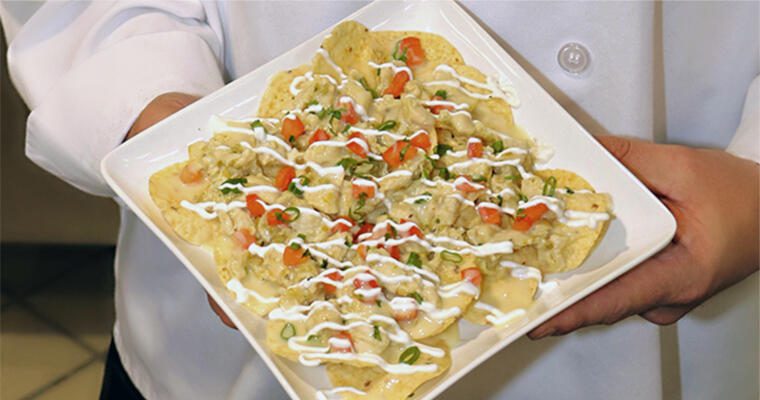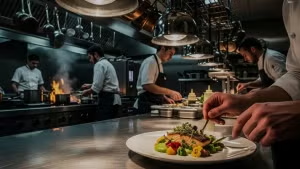Heat macaroni, add cheese sauce, shredded pork, barbecue sauce and create BBQ Mac & Cheese. Speed-scratch meals sound simple. They save K-12 foodservice programs labor, prep time and money. But recipes can be more efficient with a special ingredient—proper training.
At the nation’s eighth-largest school district, a lot more goes into speed-scratch cooking than meets the taste buds. Exacting and consistent staff training is the best path to savings and creating menu items students want again and again.
At Hillsborough County Public Schools near Tampa, Florida, staff training helps the foodservice team get the most out of speed-scratch. If it works for the 200-plus managers and 1,800 total employees there, it can work at districts of all sizes.
It comes to life by using a scratch-cooking mindset to bring students food that’s restaurant quality. Speed-scratch brings great savings in cost, labor, control over ingredients and nutritionals, but a lot of that can be lost without proper training.
Training starts with consistency
A pinch of this, a dollop of that and a handful of something else may work in grandma’s kitchen, but when you’re making 230,000 meals a day, inconsistency can be costly. A mistake on one ingredient spoils a large batch.
To build consistency, the team trains on culinary concepts. Whether it’s handouts, videos or hands-on training, every lesson is the same. It builds a culture where everyone speaks the same language.
The base concept in all training is mise en place—the step where every ingredient is collected, measured and inspected. It ensures chefs never have to leave their station until the recipe is complete.
It’s not as easy as it sounds. One training exercise involves making honey mustard dipping sauce. Sticky honey is hard to measure, and if chefs mismanage the process, the result is different flavors from each batch. It teaches how proper, consistent prep techniques pay off.
Training beyond mise en place
From entry-level workers all the way up to the district’s 70 American Culinary Federation certified chef-managers, understanding common terms and practices is key. People who work with knives learn knife skills. Those directly involved with cooking learn how to properly sauté, caramelize, bake, make a roux and know if equipment is functioning properly.
A lesson on the science of cooking teaches about time, oven temperature and properly caramelizing food to maximize its flavor potential. A piece of bread is placed in a 200-degree oven as the chefs cover a training topic. After 20 minutes, they check the bread to discover it’s hard as a piece of stale bread would be. It has no color or aroma.
The takeaway is that a piece of bread in a 375-degree oven for four minutes comes out perfect, with the brown color and sweet, nutty smell from the caramelization from the sugars and amino acids.
Knowing how to avoid undercooking or overcooking food affects consistency and profits, especially in the court of public opinion. If it tastes bad, a student may never eat that food again. The result is wasted money.
Training and speed-scratch unite
Hillsborough offers two entrees daily. One item is grab-and-go, such as a chicken sandwich. The other entree is chef-inspired. That’s where the chefs apply scratch or speed-scratch recipes.
The recipe book is ever-changing, but there are dozens of speed-scratch examples. The Loaded Chicken Tatchos use packaged tater tots, shredded rotisserie chicken (or beef crumbles or pork) and nacho toppings.
The inspiration for that dish was a staff member’s trip downtown one day, where a food truck was serving tater tots in a variety of ways. One version used the potato bites instead of nacho chips as a base.
Ideas also come from listening to students. When they talk about favorite restaurant foods, the team brainstorms recipe ideas. It has them calling on speed-scratch ways to offer Latin, Caribbean, Cajun, traditional American, Italian and even testing an Indian favorite — chicken tikka masala.
Mac and cheese dishes are among the most popular. It works because the chefs can start with a base and change the flavors. That’s where the speed-scratch comes in. But there’s not a recipe that can be created on site before it’s standardized to meet dietary regulations and added to the system. Once that’s done, lessons learned in training and speed-scratch foods can be used to simplify and mass-produce dishes.
The district has learned you don’t achieve by bringing in ingredients alone. Anytime the word “scratch” is used, there’s a lot of culinary concepts and techniques involved. With training up front, the knowledge pays off with cost savings in execution.











